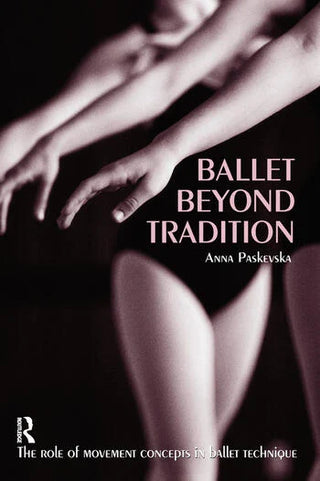Ballet Beyond Tradition
- Unit price
- / per
-
Author:Anna Paskevska
-
ISBN:9780415970181
-
Publication Date:November 2004
-
Edition:1
-
Pages:187
-
Binding:Paperback
-
Publisher:Routledge
-
Country of Publication:United Kingdom


A Back Order button means that we don’t have the book in stock at our store. It may already be on order – or we can order it for you from a publisher or distributor at no additional cost.
As we source items from around the globe, a back-order can take anywhere from 5 days to several weeks to arrive, depending on the title.
To check how long this might take, you’re welcome to contact us and we can provide an ETA or any other information you need. We recommend checking the timeframe before committing to an online order.
Ballet Beyond Tradition
- Unit price
- / per
-
Author:Anna Paskevska
-
ISBN:9780415970181
-
Publication Date:November 2004
-
Edition:1
-
Pages:187
-
Binding:Paperback
-
Publisher:Routledge
-
Country of Publication:United Kingdom
Description
Adding product to your cart
You may also like
A Back Order button means that we don’t have the book in stock at our store. It may already be on order – or we can order it for you from a publisher or distributor at no additional cost.
As we source items from around the globe, a back-order can take anywhere from 5 days to several weeks to arrive, depending on the title.
To check how long this might take, you’re welcome to contact us and we can provide an ETA or any other information you need. We recommend checking the timeframe before committing to an online order.
You may also like
You may also like
-
For nearly a century, the training of ballet and modern dancers has followed two divergent paths. Modern practitioners felt ballet was artificial and injurious to the body; ballet teachers felt that modern dancers lacked the rigorous discipline and control that comes only from years of progressive training. Though dance kinesiologists and students of human motion have studied both techniques, their findings have rarely informed the teaching of either. Ballet Beyond Tradition seeks to reconcile these age-old conflicts and bring a new awareness to ballet teachers of the importance of a holistic training regimen that draws on the best that modern dance and movement-studies offers. Paskevska persuasively argues that ballet technique has itself evolved over the last three centuries; and that the most vital dance movement is one that absorbs outside influences as well as preserving its traditions. All dance forms use the body as their instrument, and all require flexibility, strength, control, awareness of intent and meaning, kinetic energy, musicality and rhythm.Ballet Beyond Tradition offers new ways to understand the ballet vocabulary in terms of the most recent understan of the body and how it moves.
-
-
Author: Anna PaskevskaISBN: 9780415970181Publication Date: November 2004Edition: 1Pages: 187Binding: PaperbackPublisher: RoutledgeCountry of Publication: United Kingdom
For nearly a century, the training of ballet and modern dancers has followed two divergent paths. Modern practitioners felt ballet was artificial and injurious to the body; ballet teachers felt that modern dancers lacked the rigorous discipline and control that comes only from years of progressive training. Though dance kinesiologists and students of human motion have studied both techniques, their findings have rarely informed the teaching of either. Ballet Beyond Tradition seeks to reconcile these age-old conflicts and bring a new awareness to ballet teachers of the importance of a holistic training regimen that draws on the best that modern dance and movement-studies offers. Paskevska persuasively argues that ballet technique has itself evolved over the last three centuries; and that the most vital dance movement is one that absorbs outside influences as well as preserving its traditions. All dance forms use the body as their instrument, and all require flexibility, strength, control, awareness of intent and meaning, kinetic energy, musicality and rhythm.Ballet Beyond Tradition offers new ways to understand the ballet vocabulary in terms of the most recent understan of the body and how it moves.-
Author: Anna PaskevskaISBN: 9780415970181Publication Date: November 2004Edition: 1Pages: 187Binding: PaperbackPublisher: RoutledgeCountry of Publication: United Kingdom
-



